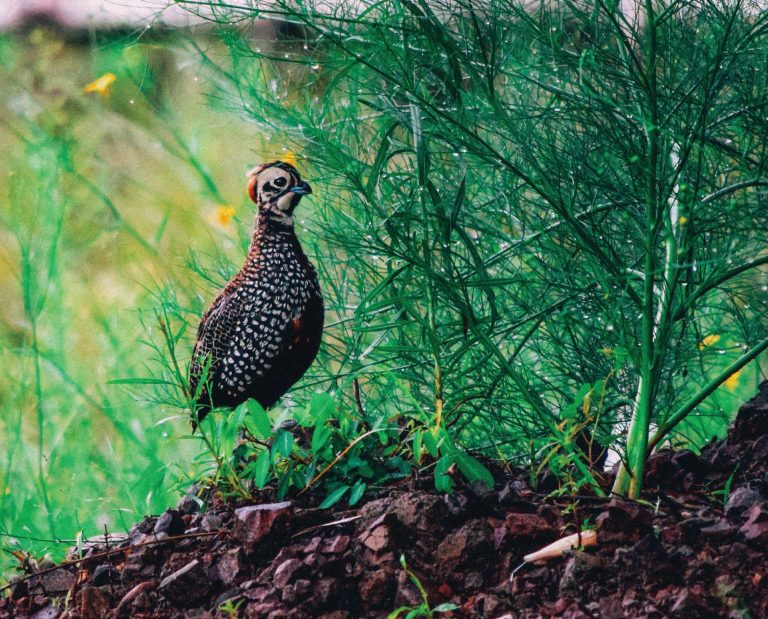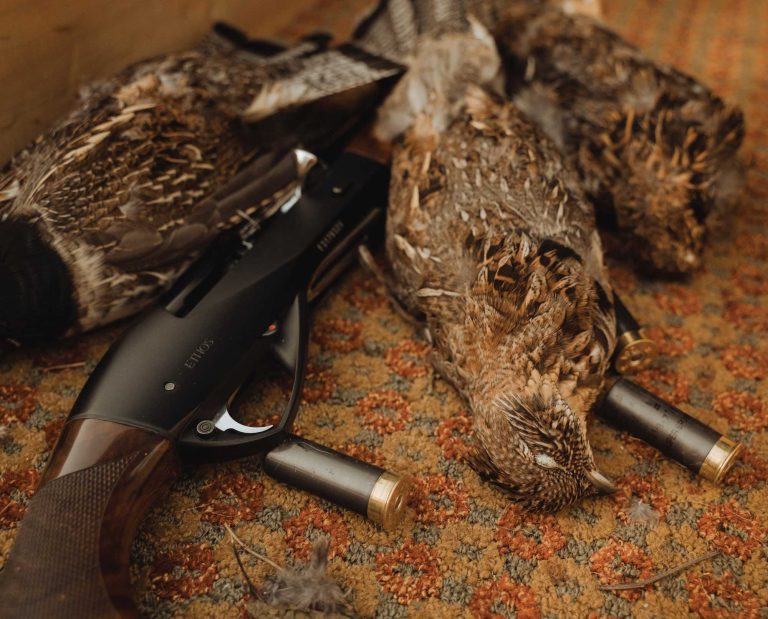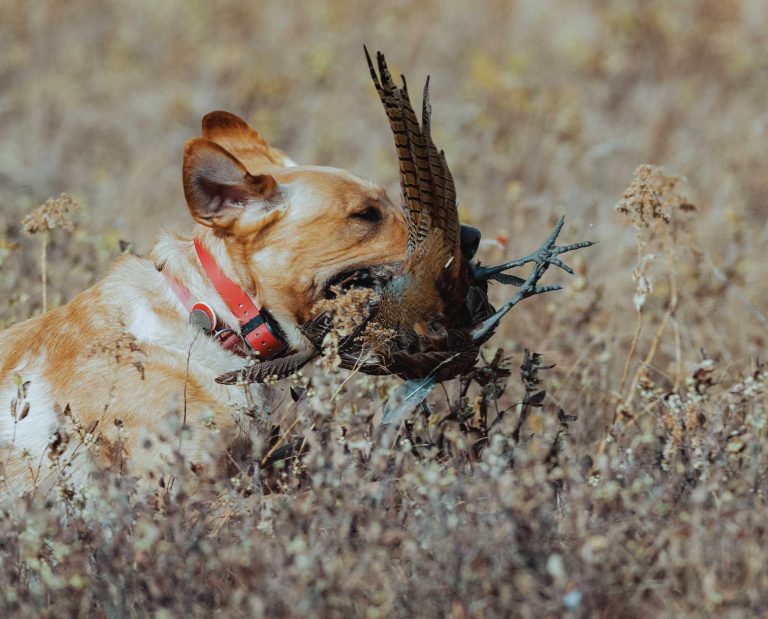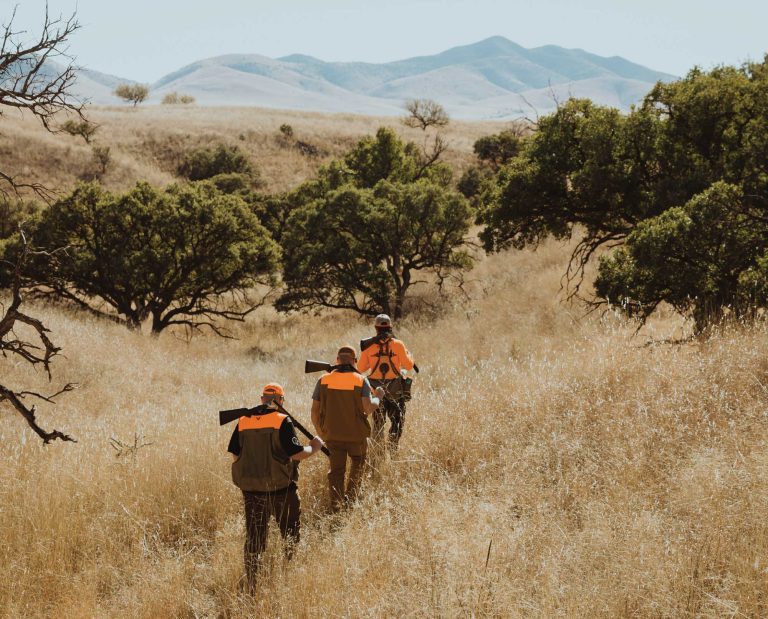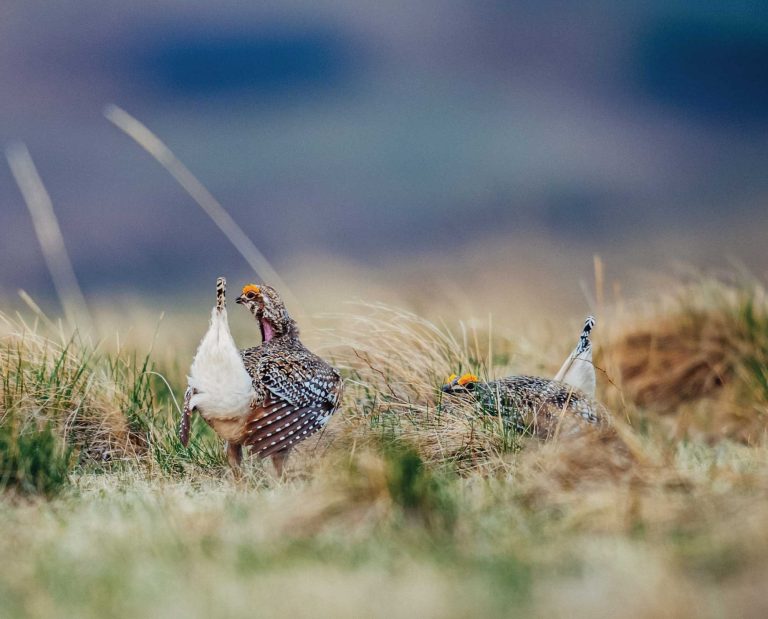Greater Prairie-Chicken (Tympanuchus cupido) – A Game Bird Profile
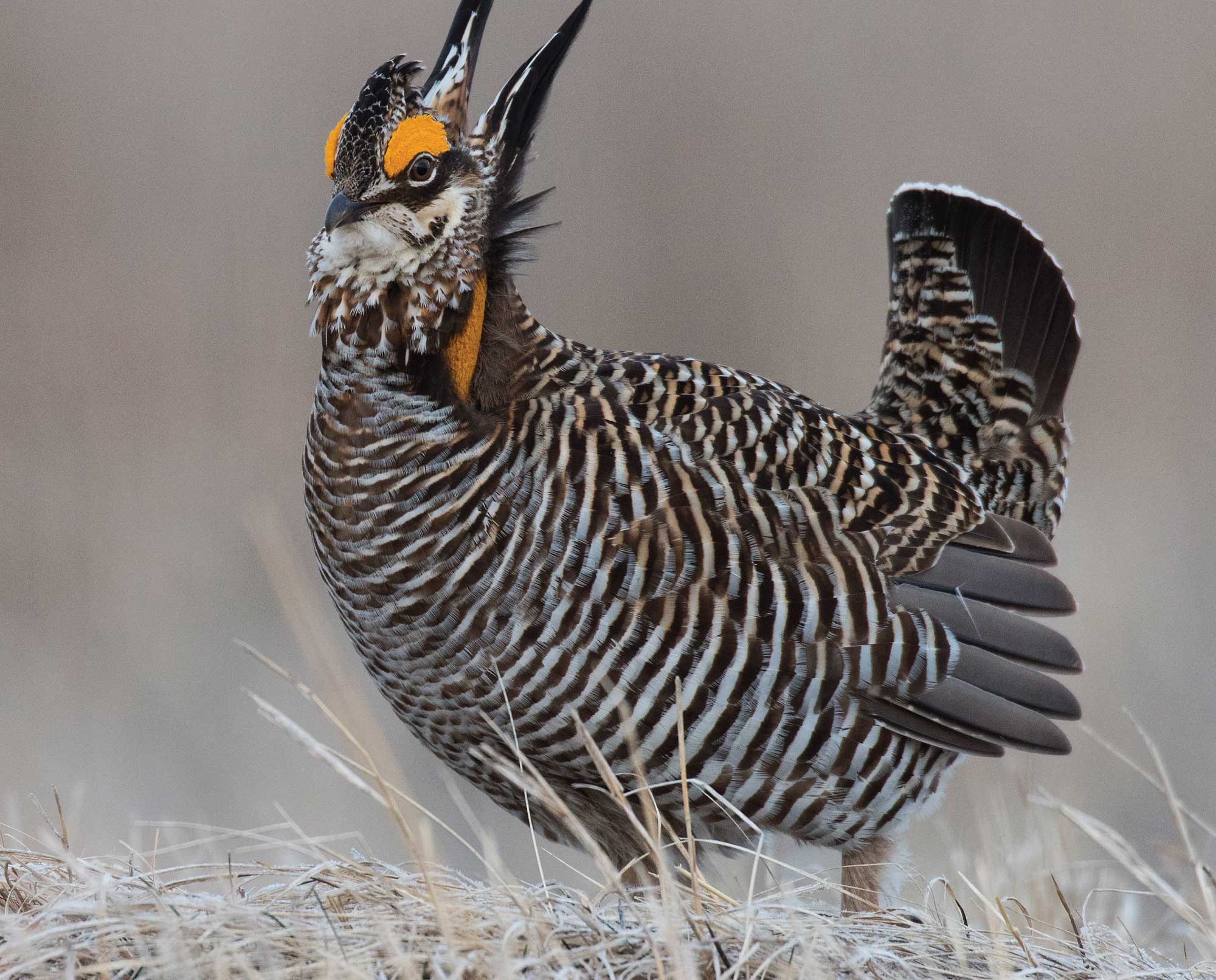
Hunting the ghostly-sounding and comical greater prairie-chicken
If you’ve never seen a greater prairie-chicken, you’re missing out on an extremely beautiful and unique-looking bird. And their dance moves will make you chuckle…but we’re getting ahead of ourselves.
The greater prairie-chicken used to occupy a great swath of our country. Despite setbacks over time, they still exist in somewhat stable and localized populations across the interior of the country. Its smaller and close cousin, the lesser prairie-chicken (Tympanuchus pallidicinctus), has suffered more habitat loss and cannot be hunted today due to population viability concerns. As such, we will focus on the greater prairie-chicken.
Description and life history
The greater prairie-chicken is a medium-large bird about the size of a chicken that is part of the grouse family. Both males and females have similar feather colors and patterns—bars of dark brown and beige—across most of their bodies. They have a short rounded tail and relatively short wings for a prairie bird. Don’t let that trick you: they’re fast-flying. Males have a yellowish comb of feathers over their eyes. Oval yellowish, orange air sacs inflate from their neck during territorial dances. The long pointy pinnae feathers that rest alongside the neck, which can be raised like ears, further distinguish the males.
Prairie chicken consume mostly seeds, grains, buds, leaves, berries, and fruits from the prairie or remote agricultural areas. Insects make up a large proportion of their diet during the spring and summer. Young chicks mostly consume insects, because of their high protein content. Natural predators of adult birds include red-tailed hawks and owls. Ground predators like foxes, coyotes and raccoons happily raid nests (if they can find them).
They are very territorial birds and have intense dance competitions to identify the males who’ll be doing the heavy lifting come breeding season. Did I mention that the greater prairie-chicken mating ritual is very entertaining to watch? Males identify areas with naturally short vegetation or areas cropped by herbivores as their leks or booming grounds. These are the terms used for their dancing stage. The best leks will be on short hills with good visibility around them. These hills also let the booming sounds carry further for females to hear.
Starting in late March or April across the interior of the country, males start producing ethereal booming sounds from their throat sacs. Thus commences their comical stutter, step dance. At first, these areas are where the birds establish a social hierarchy. Males face off in a dance battle to determine which birds will have to defend the lek. This is part of the pecking order. It’s not unusual to have 10 to 20 males at a single lek competing for their rights. Strangely enough, males will not often switch between leks within the same year when bested in the dance competition. As hens watch this procession, they eventually choose the winners as their mates.
Hens build a ground nest tucked into tall grasses for cover and typically line it with feathers and other plant matter. They normally lay about ten light tan-colored eggs per clutch. One month of incubation later, the chicks emerge from the nest with their mother. Though they can fly within two weeks, they stay with the hen for about three months. After that, they’re ready to claim their independence.
READ: Game Meat Profile: Greater Prairie-Chicken Nutrition, Cooking Tips, and Handling
Range and habitat
The prairie chicken name gives away its ideal habitat. They are birds of the tallgrass prairie or oak savanna historically, putting their range across mostly the center of the country: the Great Plains states. Tallgrass prairie is dominated by big bluestem, Indian grass, and switchgrass. Generally, tallgrass prairie only exists in areas that have fertile soils and see more rainfall in a year. The oak savanna habitat type exists on the fringe of the prairie and is a buffer between the deciduous forest and prairie. Its defining growth consists of oaks scattered across a mostly open prairie area. Lands that have been planted into the CRP program for many years may hold birds, though these contracts may change enough to not support much of a resident population of prairie chickens.
Several telemetry studies have been done over the years to test prairie chicken avoidance to manmade structures and disturbance. Researchers from one study (Winder, et al. 2015) showed that male and female greater prairie-chickens avoid lek sites within eight kilometers (roughly 5 miles) of wind turbine sites. A possible theory claims that they perceive these towers as perch sites for predatory birds. It is assumed that other infrastructure like roads, power lines, and houses have a similar effect.
Conservation issues for the greater prairie-chicken
While hunting pressure historically played a role in greater prairie-chicken population reductions, it is tightly managed now by various state agencies to ensure an appropriate number are killed each season. Loss of natural prairie to agriculture and development over time has significantly reduced the available habitat for these birds, limiting them to prairie remnants where development never occurred. The species has been extirpated (locally extinct) from many of its historic range states because of this alone.
These days, the biggest threat to their survival relates to the weather. Untimely spring rains can affect nesting success, causing chick chilling and death, just like ring-necked pheasant or ruffed grouse. Similarly, mid-summer droughts can drastically reduce the available food and cover necessary for these prairie grouse to survive.
Perhaps the oddest conservation issue affecting the greater prairie-chicken comes from another upland species: the ring-necked pheasant. Pheasant hens will occasionally lay eggs in prairie chicken nests, a sinister practice called nest parasitism (Westemeier, et al. 1998). Prairie chicken hens will usually leave their nests within a day of their first egg hatching. Pheasant eggs tend to require a few days less for incubation than prairie chicken eggs. As a result, hens will see the pheasant chicks and lead them away from the nest, leaving the almost-ready prairie chicken eggs to a grim future.
Hunting opportunities for greater prairie-chicken
Despite the setbacks this species has had to endure and still must face, it is still legal to hunt them in a few states where the populations are stable and closely watched. Some of the states require special permits to hunt them or have different zones with different seasons. See the table below for the states where you can hunt them, as well as the general seasons and daily bag limits. However, consult the hunting regulations for each state for more information about the hunting zones.
| State | Season | Bag Limit |
| Colorado | October 1 – January 1 | 2* |
| Kansas | September 15-January 31 | 2 |
| Minnesota | September 30 – October 8 | 2* |
| Nebraska | September 1 – January 31 | 3 |
| South Dakota | September 17 – January 1 | 3 |
* Season limit of 2 birds
As far as hunting techniques go, the greater prairie-chicken can be a tricky bird to get close to. In the early season when birds are by themselves or in small groups, having a dog with a good nose and some sturdy boots is the best way to hunt them. Be prepared to really cover some ground. If you get lucky enough to stalk up to a pointed bird, many will still flush well ahead of your arrival. This makes an ethical shot difficult or impossible. Make sure you know the limits of your abilities, your gun, and the loads you’re shooting. In many cases, it may make more sense to opportunistically shoot a prairie chicken while you’re already pheasant hunting.
In the late season, birds will flock together more and feed in large groups. This is when you can adapt some waterfowl hunting techniques to work on the open prairie. Set up on the edge of a cut grain field with camouflage clothing and perhaps blinds. Wait for prairie chicken flocks to show up. Depending on where you hunt and the available food there, this tactic could set you up for a very boring day. It’s not for everyone. But doing some scouting and relying on the landowner’s observations should help you find a good spot and bag some chickens. If you’re lucky enough to get a prairie chicken in a season, take a moment to savor it. They’re a very special type of bird.
Sources
Natureserve. 2017. NatureServe Explorer: An online encyclopedia of life. Accessed at http://explorer.natureserve.org
National Audubon Society. 2017. Guide to North American Birds. Accessed at: http://www.audubon.org/field-guide/bird/greater-prairie-chicken
Winder, V.L., A.J. Gregory, L.B. McNew, and B.K. Sandercock. 2015. Responses of male Greater Prairie-Chickens to wind energy development. The Condor: Ornithological Applications 117:284-296. Accessed at: https://bioone.org/journals/The-Condor/volume-117/issue-2/CONDOR-14-98.1/Responses-of-male-Greater-Prairie-Chickens-to-wind-energy-development/10.1650/CONDOR-14-98.1.full
Westemeier, R.L., J.E. Buhnerkempe, W.R. Edwards, J.D. Brawn, and S.A. Simpson. 1998. Parasitism of Greater Prairie-Chicken Nests by Ring-Necked Pheasants. The Journal of Wildlife Management 62:854-863. Accessed at: https://www.jstor.org/stable/3802536



